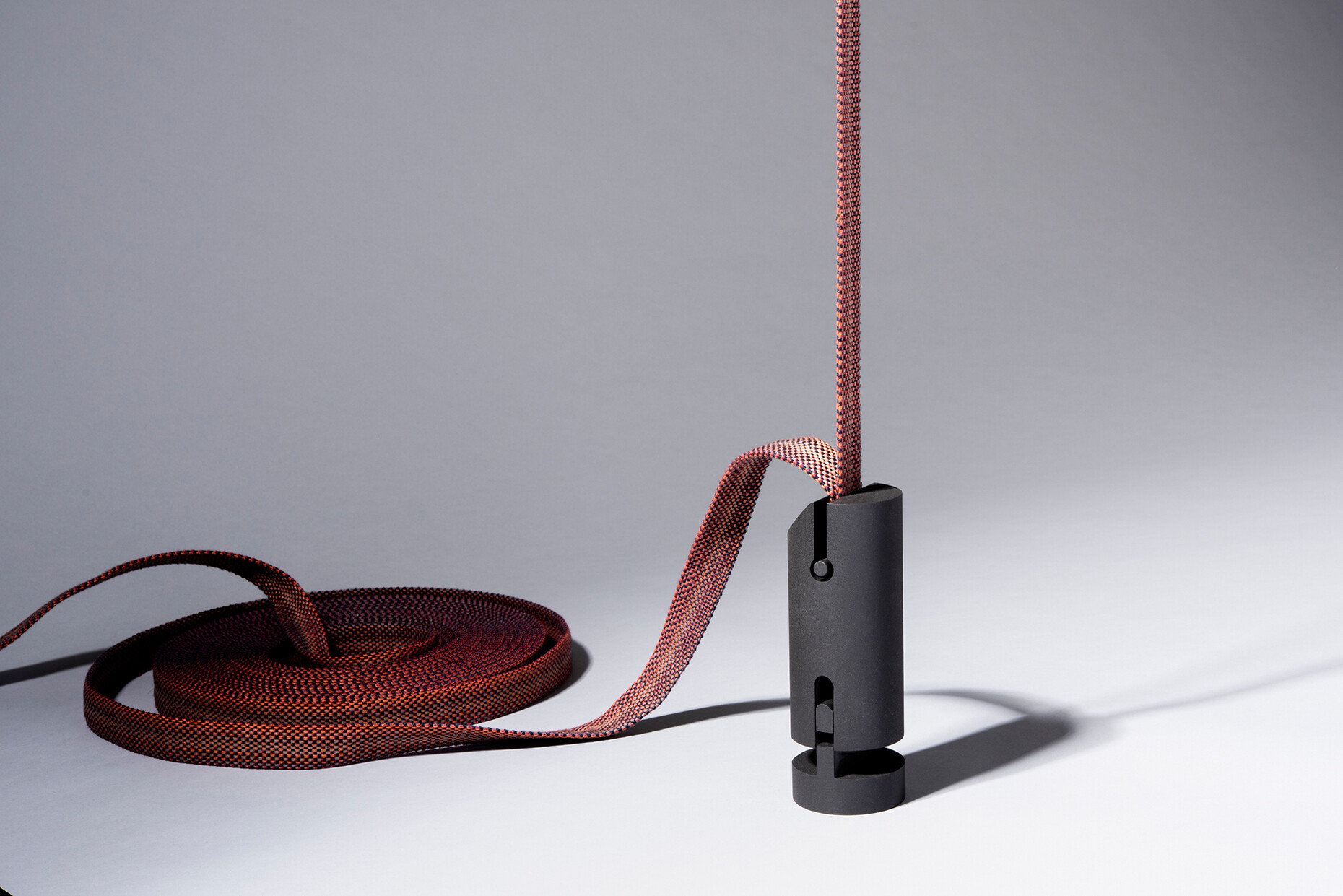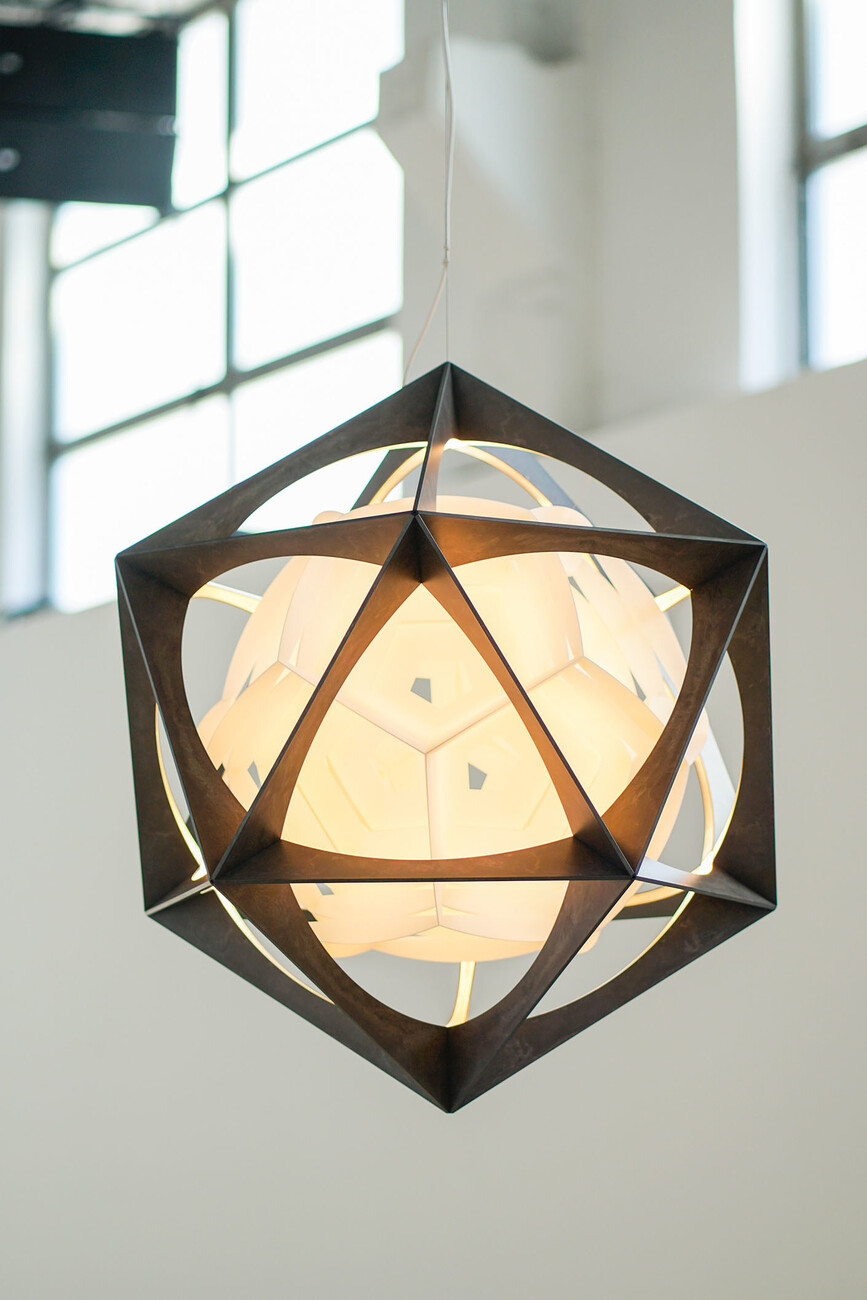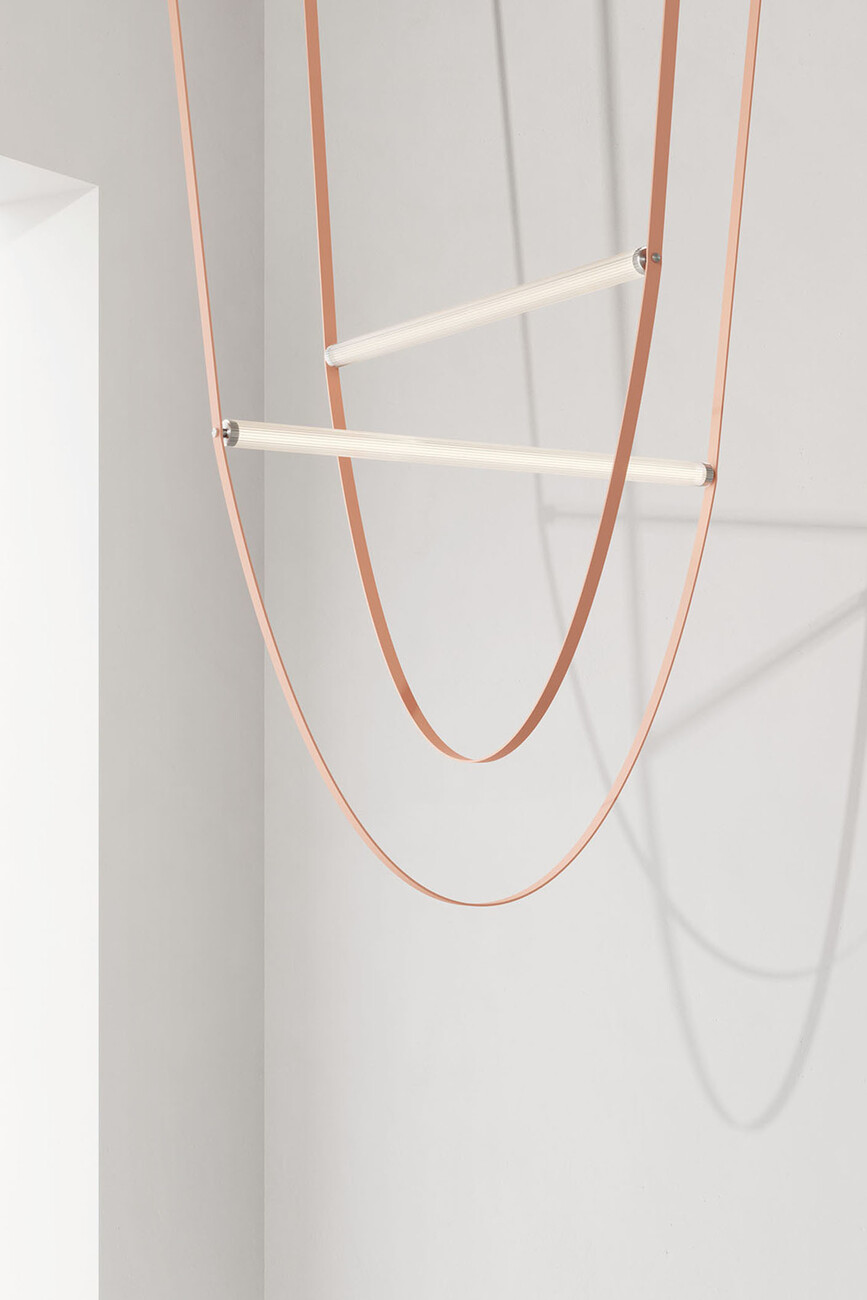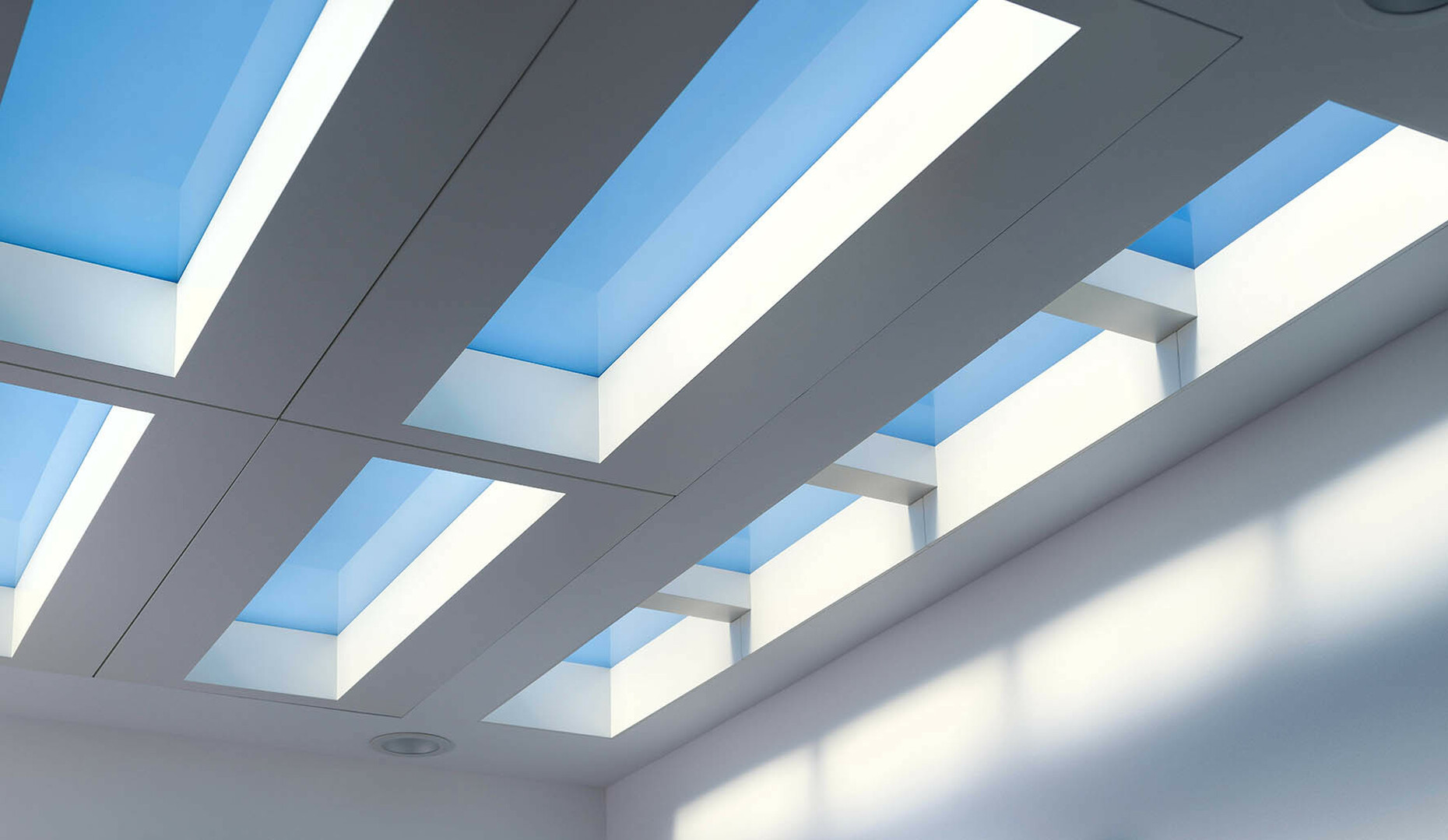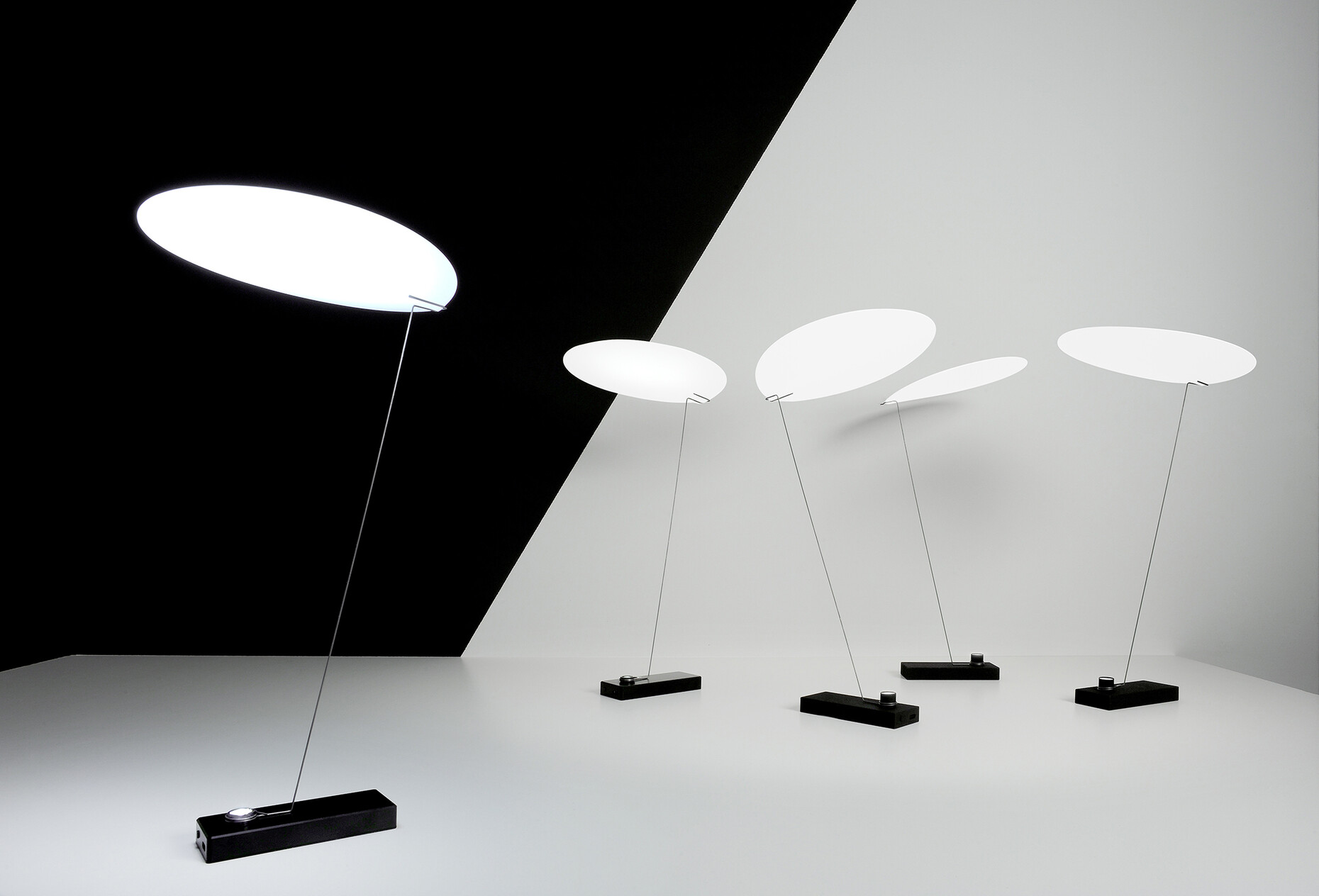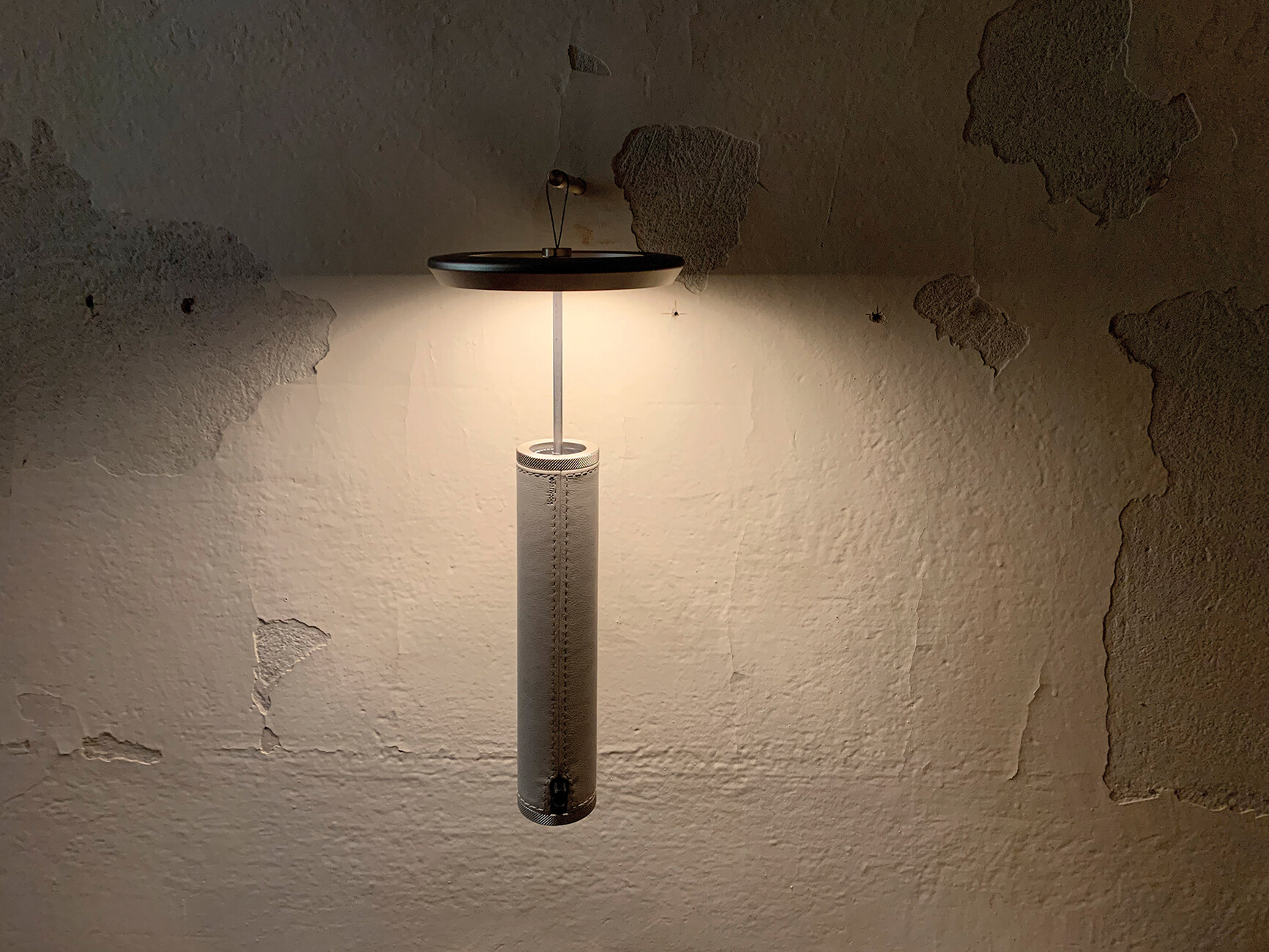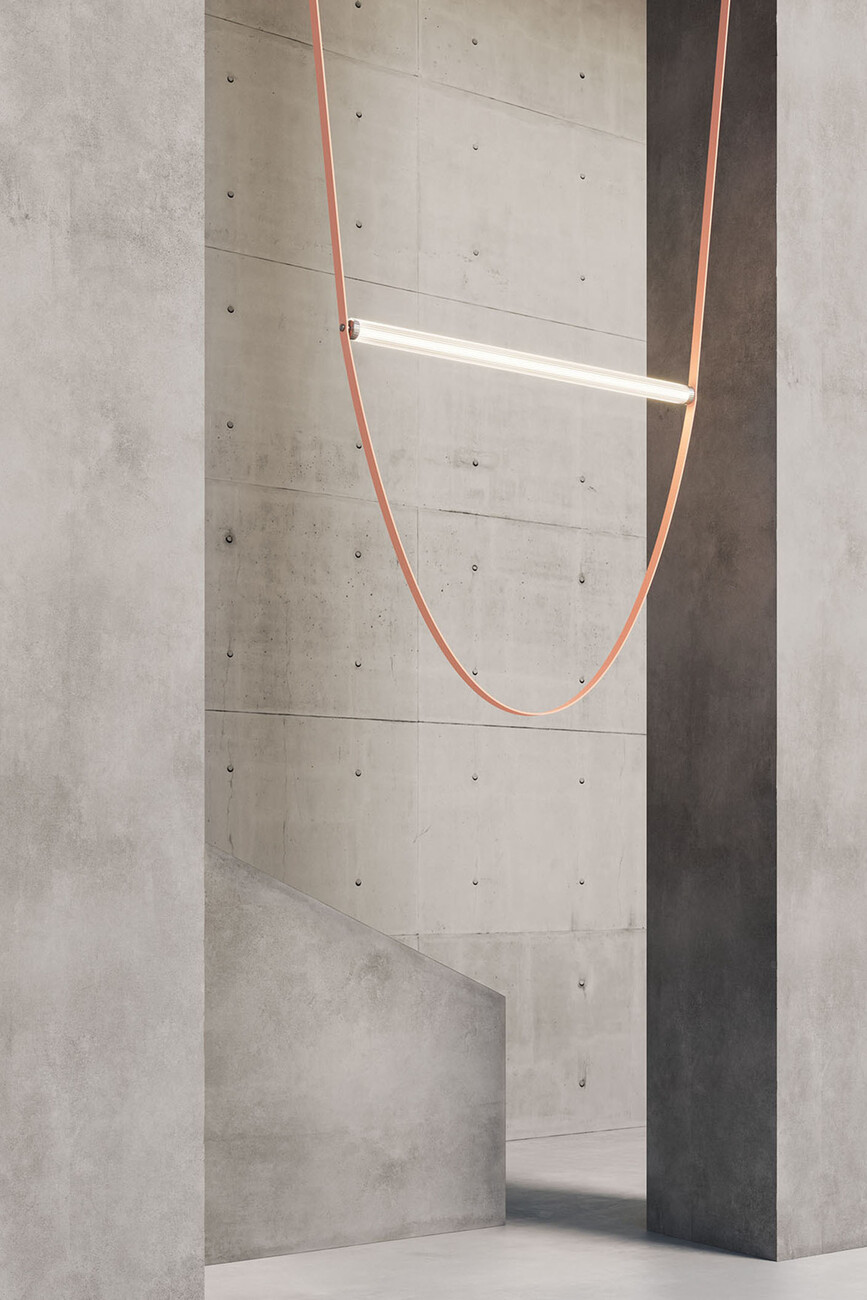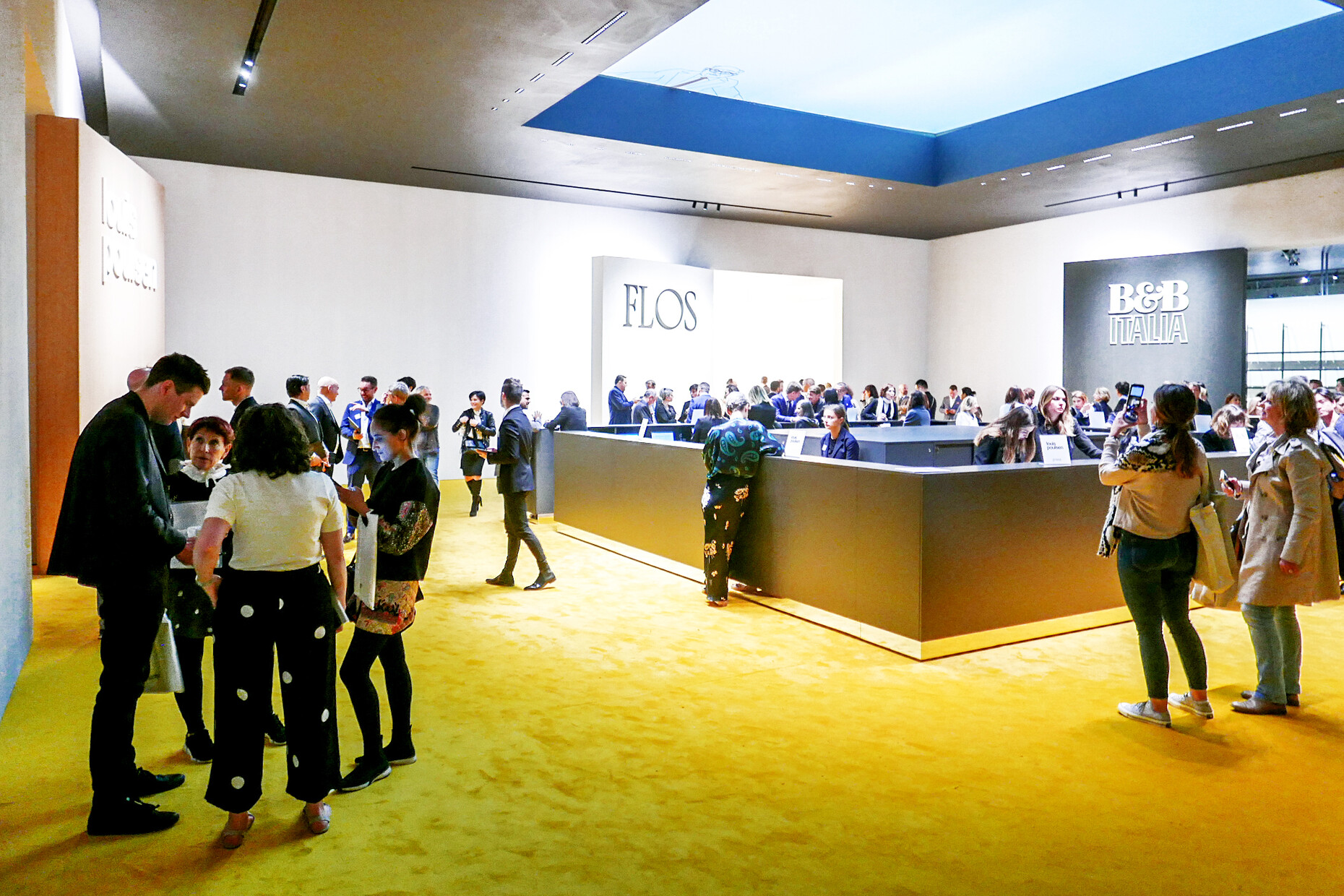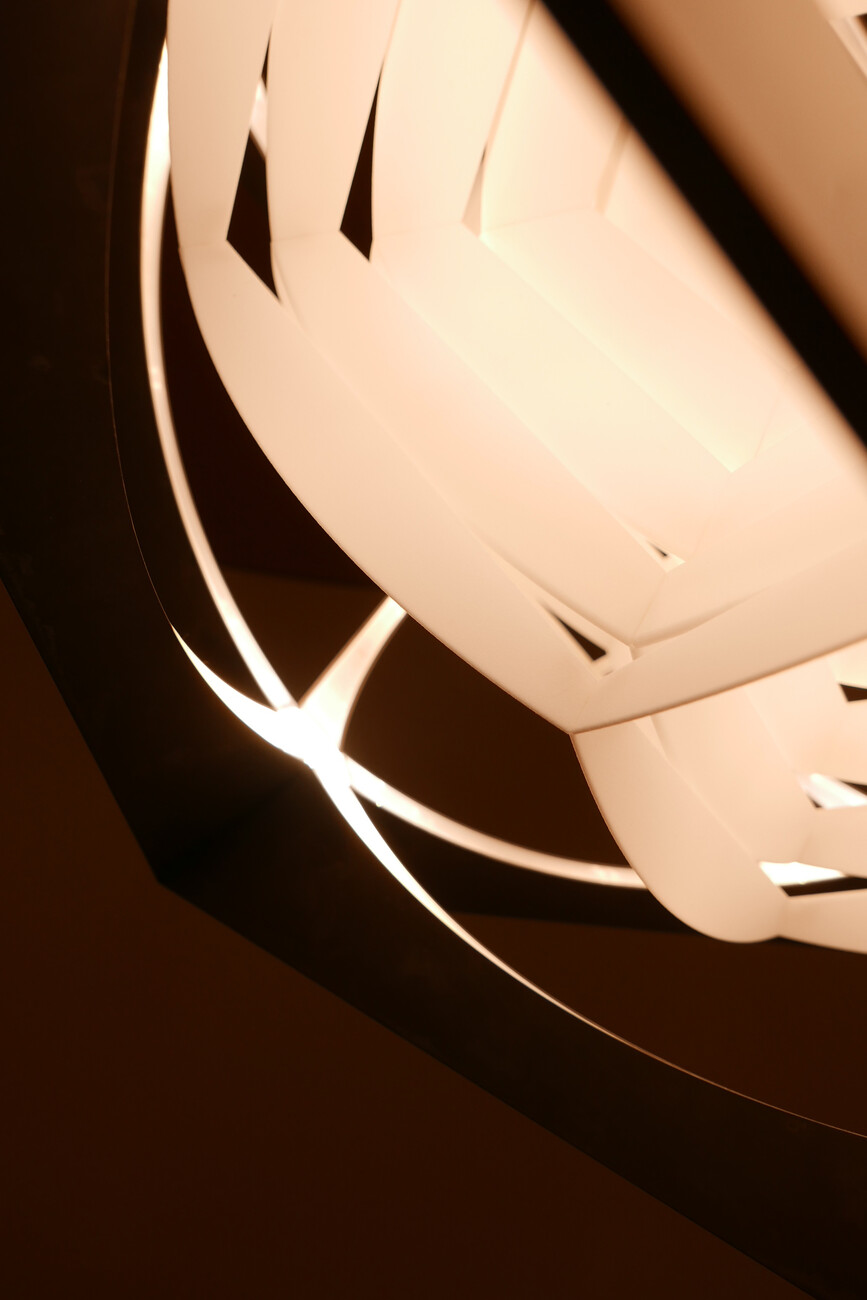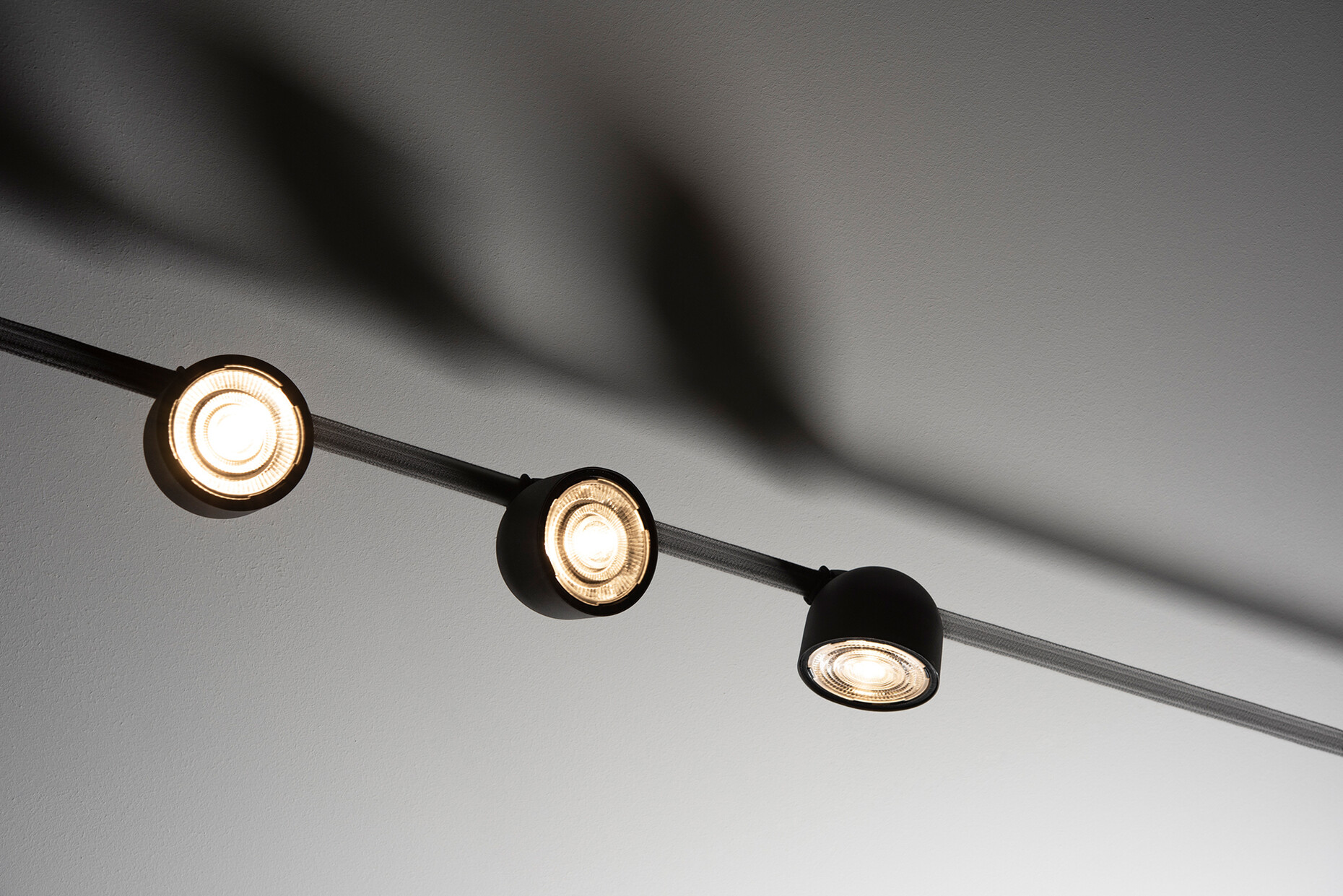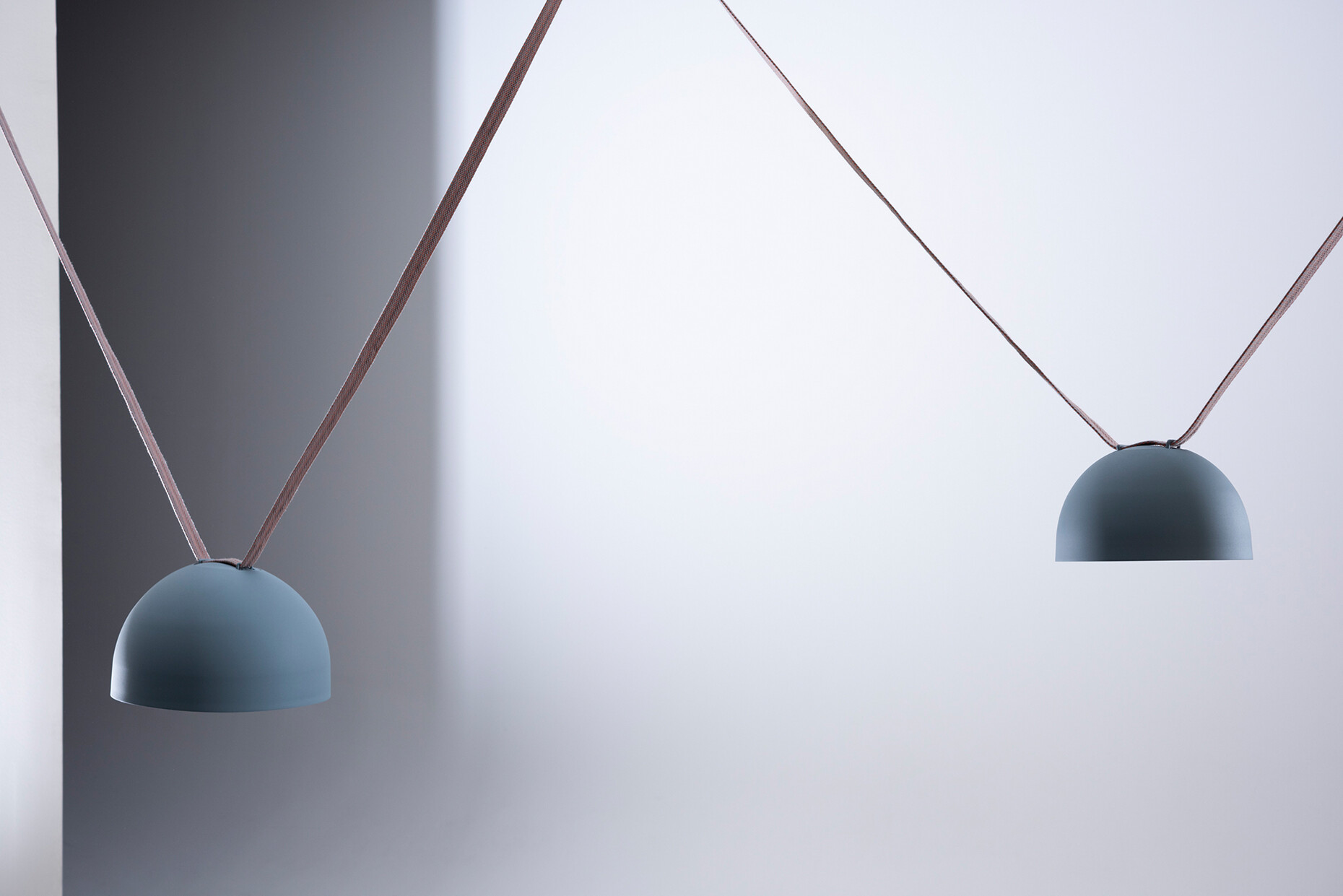REVIEW – SALONE DEL MOBILE 2019: EUROLUCE
System highlights of the fair – big and small
Its historical precursors still flicker here and there, but the light-emitting diode (LED) has asserted itself as a light source. Wherever particular quality is called for the LED is refined still further technically, for example where color reproduction is concerned. Edison’s light bulb has pretty much had its day, and in many an illuminant now features merely as a formal echo, as a retro-fit. Everything now shines in the glow of light-emitting diodes – furniture, kitchens, stairs, garden paths and flower beds, parks, and private and municipal illuminated buildings. The number of the LED’s uses is increasing rapidly, even if the individual diodes, the individual light points consume less electrical energy than previously. When the lighting in Milan Cathedral was recently replaced with ERCO LED spotlights, the planners were aiming for greater brightness, which they have achieved with more energy-efficient luminaires.
At Euroluce a new maximalism is making its presence felt. We are used to large constructions and installations by Flos, Preciosa, and Lasvit. It is also increasingly about new company structures. These are countering the previously fragmented scene that became established over the past few years. Currently, the most spectacular project is “Design Holding,” which in addition to traditional brands Flos and Louis Poulsen also embraces the furniture brand B&B Italia.
As the Italian business newspaper Il Sole 24 Orereported at the start of the fair, the aim is to increase the “critical mass” of those companies, which though excellent in terms of production and still acknowledged, on account of their small size do not, however, have the necessary capital to be internationally competitive. The hour of financial capital has come. In 20104 the Italian private equity firm Investindustrial acquired 80-percent majority stake in Flos, in 2015 bought B&B Italia, in 2016 the kitchen manufacturer Arclinea, and in 2018 took over the traditional Danish lighting brand Louis Poulsen. Now, with the aid of the bullish US private equity company Carlyle Group, they are joining forces to form “Design Holding,” headed by Piero Gandini, previously boss of Flos. The two investor groups each hold 50 percent of the consortium. So why could this be important for dealers and consumers? The individual companies, whose combined sales previously totaled 500 million euros, are intending to become a money spinner with international operations. The company’s name and image indicate that in future too, design will not be serving as an accessory, but as the very basis of the business model. Carlyle, however, is uncompromisingly geared to yield. This time, the motto of the companies at the fair and showroom presentations was: Think big. Synergies arise in the background, for instance by standardizing the sales structures of the two luminaire manufacturers, which is intended to contribute to greater dynamism and an expansion of the respective markets. Flos has long since been setting the pace at Euroluce as far as presentation and staging go. That now goes for the entire group. With the “S.Project” space, the Salone del Mobile even provided a new hall for those 66 companies and groups that no longer offer just furniture and luminaires, but rather comprehensive furnishing ranges. At the “Design Holding” stand there it was gratifying to see that unlike the others it did not seek to stage exclusivity as a process of rejection. In a funnel-shaped corridor, visitors were channeled via interactive lighting effects to the stand’s inner area, a giant courtyard of sorts, from which, in turn, floor-to-ceiling open doors with backlit walls led them into the worlds of the individual brands.
This year’s highlight of the carefully manicured Louis Poulsen range is “OE Quasi” by Olafur Eliasson, a suspended luminaire with a diameter of 90 centimeters; smaller versions are to follow. The piece, which weighs 22 kilograms, consists of a combination of two Platonic solids, an outer icosahedron made of cast aluminum and an inner plastic reflector in the shape of a dodecahedron. This combination of ideal geometrical shapes has inspired philosophers, mathematicians and designers since ancient times. “OE Quasi’s” LED light is emitted from corner points of the outer structure inwards, where it is refracted and reflected. The brightness and color temperature are variable. Alongside numerous interesting design advancements is the reedition of a luminaire line by Danish architect Vilhelm Lauritzen from 1953. The form is appealing, the choice of materials (frosted glass and brass) and lighting effect appear traditional and contemporary at one and the same time. Elsewhere in Milan, in the Nilufar Depot, the luminaire reappears as a historical piece at a gallery price.
On the Flos stand next door we found, in turn, a series of large, sparsely decorated rooms, most of them with just one or a few products and names of designers on the wall, looking as though they were etched into stone. A reedition of Mario Bellini’s 50-year-old model “Chiara” kicked things off. The tour of the stand ended in the darkened outdoor area, where Philippe Starck’s garden luminaire “In Vitro” stood out. Once upon a time, glass casings were made to protect the light bulb in outdoor luminaires. Starck’s luminaire series has the basic form of an oversized test tube. The bulb has disappeared; what is left is light, captured in a glass shell. You could call it poetic, surreal, or dematerializing. In its city showroom Flos presented the advanced “Noctambule” series, a system luminaire by Konstantin Grcic made of blown glass bodies that are invisible by day and whose subtly integrated light is emitted at the elements connecting them.
Good examples were also on view at Flos of another trade fair trend: “Belt” by Ronan & Erwan Bouroullec would also have been conceivable at Hermès – albeit in a less system-oriented version. Indeed, the luminaire consists of brown or black leather belts supporting leather-clad, belt-like LED modules. “Wireline” by Formafantasma makes use of drooping pink rubber bands suspended from the ceiling for the purposes of affixing the lighting elements, and power distribution. The idea of the band structure leads us to the innovative Spanish firm Vibia. Here, Stefan Diez presented his latest project “Plusminus.” It cites the tension-cord systems of the 1980s, whose best-known “YaYaHo” was created by Ingo Maurer, whereas Diez’ design rests on a woven band with integrated copper wire. Serving as Diez’ technology and cooperation partner for the product, which Vibia presented as a work in progress, was textile designer Karina Wirth from the Textile Prototyping Lab. This experimental lab for textile innovation was founded by, among others, the Weißensee Academy of Art in Berlin and the Fraunhofer Institute for Reliability and Microintegration (IZM). Wirth created the basis of the project with the textile band with precisely integrated copper. The design also includes spotlights with different lenses and strip lights for general and spot lighting. The band can be pulled taut like a tensioning strap. The luminaires are affixed reversibly, creating interesting application options, for example for offices whose use occasionally changes and for shopfitting. Primarily decorative use of the system is just as possible as a functional thrust. Development of the details of “Plusminus” has not yet been completed.
Companies like Foscarini have for a long time now been blazing their own trail, taking little notice of trends reported elsewhere. This year’s range of innovations reveals a somewhat more technically oriented perspective. Ferruccio Laviani’s “UpTown” is a decorative spectacle, a veritable “high-rise” table lamp or floor lamp made of bonded glass, which projects colored light upwards from the base through the glass body. “Beep” by Ludovica and Roberto Palomba emits atmospheric scattered light and features a small, off-center opening. The lighting effect can be varied – in the bathroom, for instance – by rotating the luminaire, drawing the wall, ceiling and floor into the overall effect, as the designers say. The suspended luminaire “Sun – Light of Love” was designed by Tord Boontje and consists of 390 liquid-coated metal louvers in white or gold. The soft, diffuse ambient light, distributed over the spokes, is combined with downwards-directed accent lighting.
The suspended luminaire “Trypta” by Stephen Burks for Luceplan emits indirect light upwards and direct light downwards from its cylindrical tube. Instead of expressive spots, it features acoustically effective fabric panels; the coverings are flame retardant. The panels can be of equal or differing size and affixed either parallel or at different heights. Since 2012 Luceplan has been offering multifunctional products combining lighting effect and sound insulation. These kinds of products help solve a problem with contemporary construction, namely the spaces deep within buildings that receive little or no daylight, promises physics professor Paolo Di Trapani, who specializes in optics and experimental physics with his company Coelux. Nanotechnology, a high-res projector, LED light sources and a box integrated in the ceiling of the room that simulates cosmic depth and the Rayleigh scattering of natural daylight: His products create the impression of an infinite depth of focus. One of his integrated elements consumes around 100 Watts. Should it be possible to further reduce the price and height, the ceiling panels could tap into a large market, preferably office and commercial spaces with no natural daylight, whose current lighting is somewhat unwelcoming.
Perhaps slightly less ambitious in technological terms but aesthetically generally appealing: a new generation of small, movable lamps that were ubiquitous at the Euroluce and Fuorisalone – objects with a special charm. They were on show at Tobias Grau (“Salt & Pepper”), Ingo Maurer (“Koyoo,” designed by Axel Schmid), Michael Anassastasiades (“Primitive Structure”), at Viabizzuno (“manondovevamovedercipiù”), indeed, even at Hermès as friendly trinkets made of delicate bamboo, covered with Japan paper (“Coulisse” by Tomás Alonso). Stylistic variations on the perpetual toying with light, shadow and reflection? Possibly. At the same time, luminaire manufacturers with various different thrusts showed how digitization and design can join forces to form a template for transformation and renewal. A number of other sectors are still far from this goal.

















